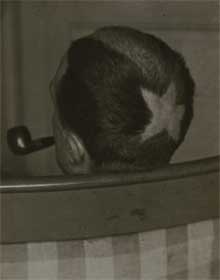Man Ray: The darling of the revolutionary set (art revolution that is)

Man Ray was born on August 27, 1890 in Philadelphia to Russian Jewish immigrants. His father was a tailor and his mother a seamstress. He was named Emmanuel Radnitzky but was known as Manny. The family moved to Brooklyn, New York in 1912 and changed their last name to Ray due to the prevalent anti-semitism of the time and place. Manny, upon moving to Greenwich Village and taking up with the artist’s revolution in his early 20’s, changed his first name to Man.
The world was upside down in 1911. World War I was brewing and freedom in all its forms became the fervor of youth. Political freedom and freedom of speech were foremost on the minds of the new bohemians. A coalition of freespeech activists, socialists, and anarchists opened the Ferrer Center on St. Mark’s Place. The center, named after Spanish freethinker and revolutionary Francisco Ferrer, was the home of the Modern School, a libertarian school for children. Emma Goldman, the famous anarchist, ran the school with a number of her friends. Robert Henri and George Bellows taught painting there for 20 cents a class. It was here that Man Ray made one of the most important stops in his career. He frequented the center and was a student of Henri. It was here that he met the photographer Alfred Stieglitz as well as the painter Abraham Walkowitz and the playwright Eugene O’Neill. His time with Stieglitz, O’Neill, and Walkowitz gave him the idea that fauve painting and the conventional artistic notions of the past decades could be the basis for an anarchic artistic aesthetic.
Ray’s best known friendship was with the artist Marcel Duchamp. Aside from a shared passion for chess, they shared a taste for the subversive and a desire to invent. As art terrorists, they blew up conventional ideas of art and aesthetics. Together they would bring the Dada movement to new intellectual heights.
Many think of Man Ray as a photographer. In fact, from his tiny room on West 8th Street in the Village, Ray became America’s leading exponent of the Dada movement, utilizing found objects and sculpture as well as photography, language, and painting, in his attempt to free the ordinary from the ordinary.
Famously, he grew impatient with New York, declaring to Tristan Tzara in Paris “All New York is Dada and will not tolerate a rival.” He soon after left the City for Paris where he spent much of the rest of his life.
